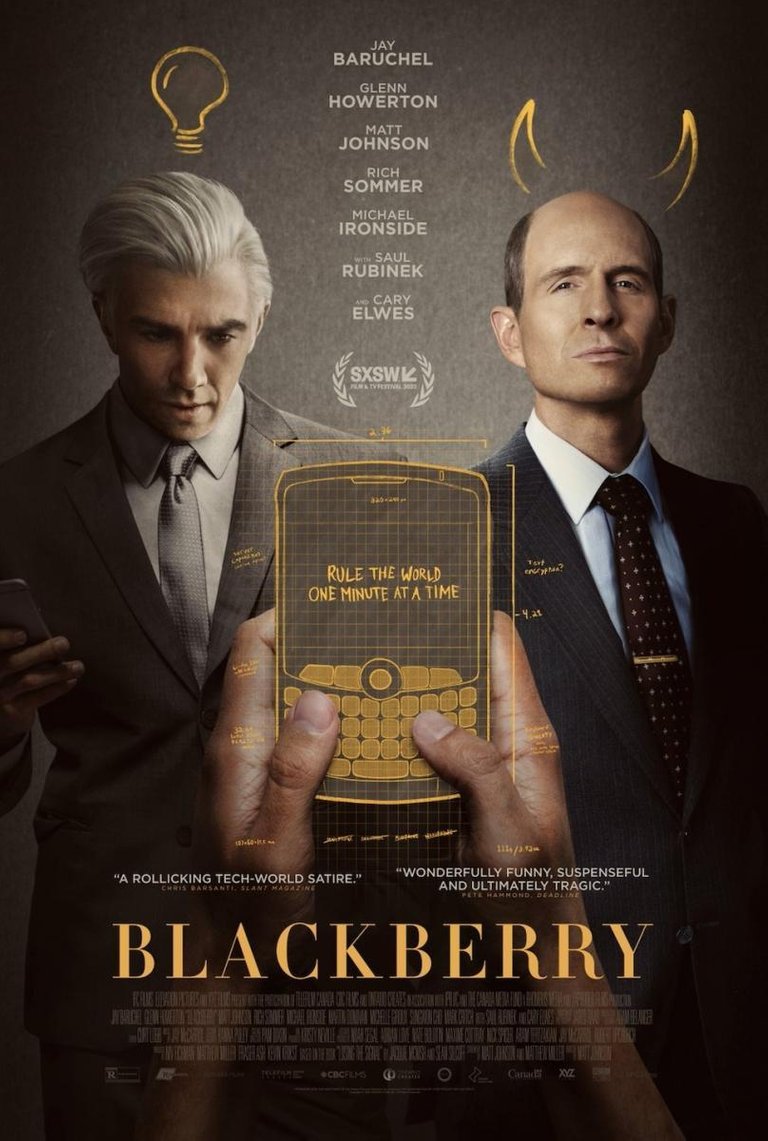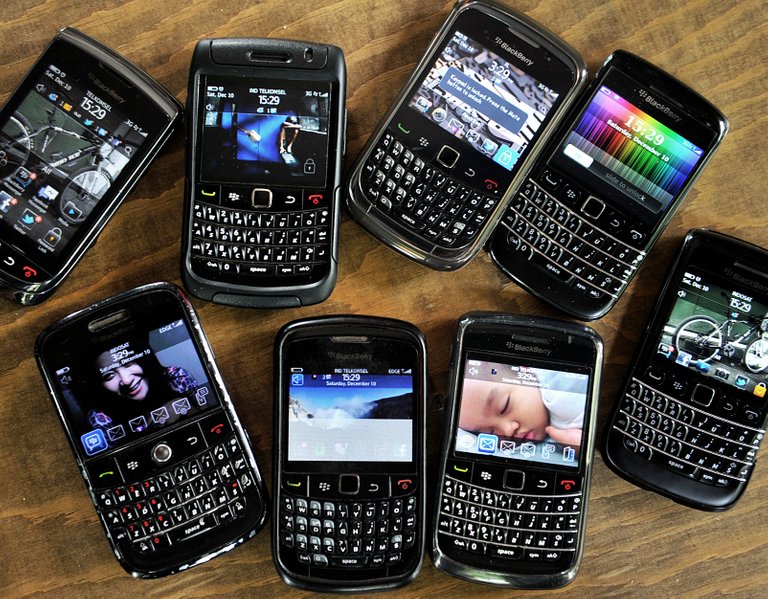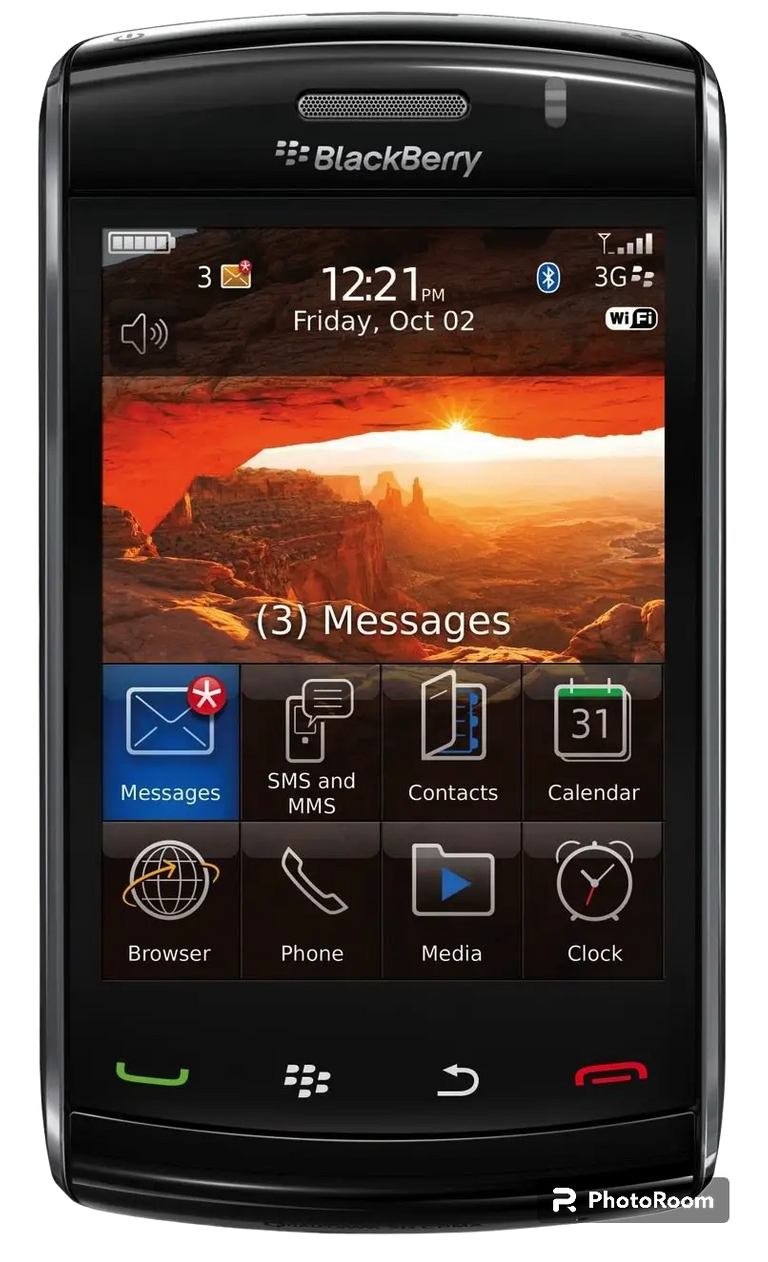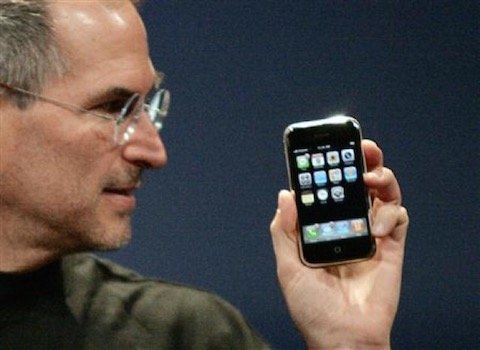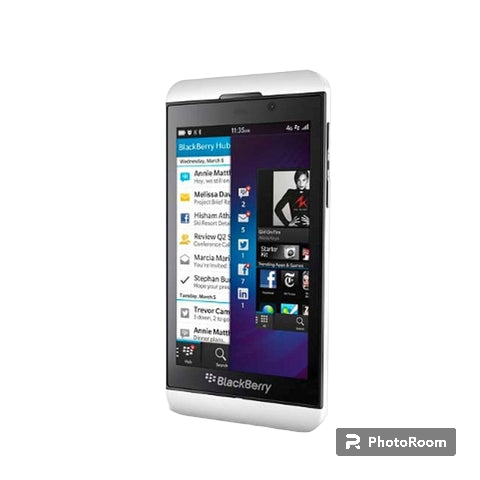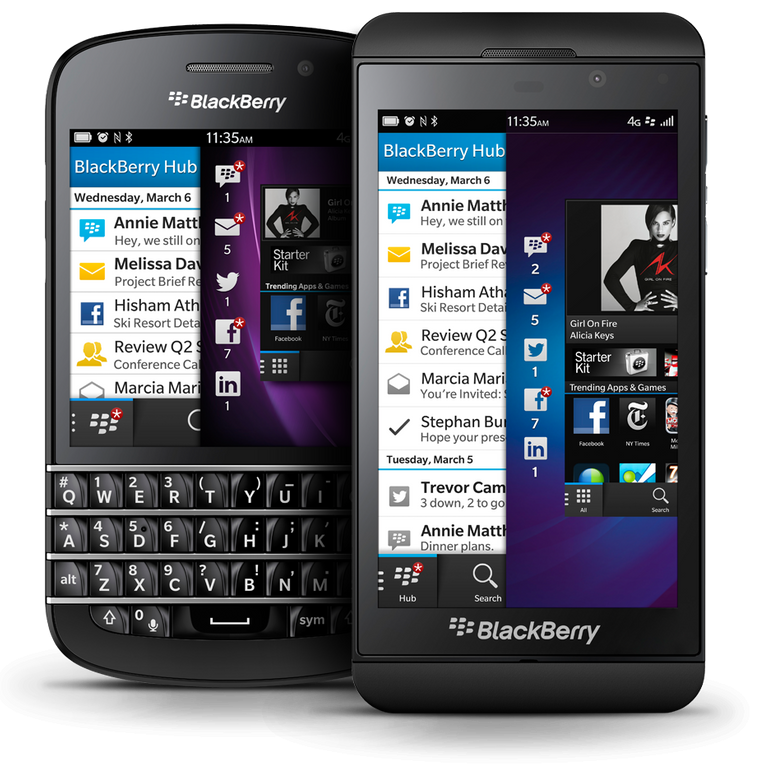Why Blackberry Died - Analysing the Z10 and the 9530. [ENG/ESP]
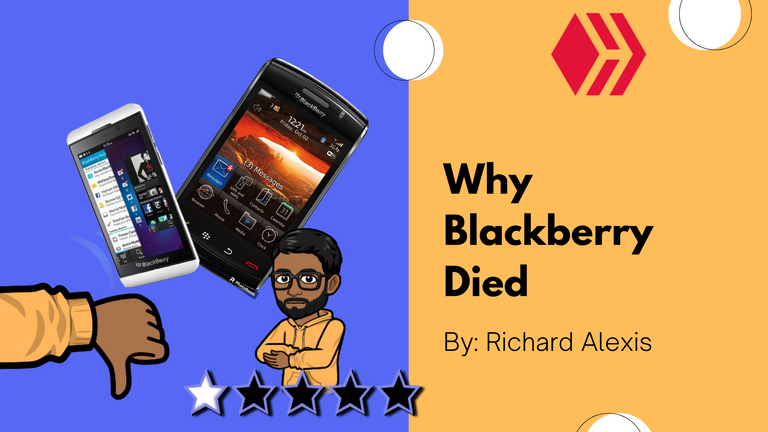
The cover was made using Canva and Bitmoji, the pictures were edited using photoroom

ENGLISH
A few days ago I had the opportunity to see the latest film by Matt Johnson "Blackberry" and, although obviously I already took care of writing and publishing its respective Review, I would like to take this moment to talk a little about the fall of Blackberry and what led them to fail in the first place (at least in my opinion).
The film focuses a good portion of its duration on portraying how the announcement of the first iPhone in 2007 ended up being a huge blow for Research in Motion from which they never really fully recovered, something that cost them to lose market dominance and subsequently the led to bankruptcy.
BlackBerry was very popular from the mid-90s to the early 2010s, something that was particularly noticeable in Latin America where for some reason its reign lasted a little longer.
In my case, for example, I had the opportunity to have several Blackberry devices; The original blackberry Pearl, the blackberry Storm and lastly the Blackberry Z10.
As a coincidence, although I enjoyed each of these devices at the time, I would like to focus on the last two that I just mentioned, since for different reasons both reflect the bad decisions that RIM made throughout all this time.
The Blackberry Storm (Or Blackbery 9530) curiously takes center stage in the third act of the film, where in the midst of despair over the announcement of the iPhone, the CEO of RIM decides to spontaneously create a hybrid that adopts a touch screen without having to give up. to the virtues of the physical keyboard, thus becoming obsessed with the idea of a screen that clicks.
The result? The Blackberry Storm was a physically beautiful device, organically fitting Blackberry's design philosophy, and perhaps hopefully it could help them make the unexpected transition.
In practice, however, RIM was too stubborn to understand that the reason the original iPhone was so successful was not the implementation of the touch screen itself, but the way in which instead of being a simple gimmick, it was an organic evolution that allowed expanding the possibilities in terms of the interface of each of the apps with which the phone would be launched, something that Jobs emphasized when comparing said screen with that of a computer, and our fingers with a mouse pointer.
The idea of pressing the entire screen was intuitive in the long run (and yes, as satisfying as using a physical keyboard), but it lost too much in terms of functionality and other aspects such as multitouch or sensitivity were totally ignored, it was strange and in our brains we could not compare its use with any other similar device.
While the Blackberry was technically a "SmartPhone," it followed an outdated philosophy of what it's like to be a smartphone in the first place—it was slow, customization features were shallow and limited, and while it could be upgraded, updates never meant a change. meaty.
The phone as a device has evolved a lot in recent years and it goes without saying that its focus is no longer just making calls and text messages, in fact, in my opinion, human beings have always wanted to leave those things behind. limitations, since in the days of "dumb phones" we made ambitious applications in Java format or had multiple video converters to 3GP, even if the screens were too small to appreciate any nonsense.
Externally, a phone like the Blackberry could appear to have the same level of functionality as an iPhone (or an Android) but the reality was that in practical terms its use was much more limited and often all that was needed was a visit to its store. apps to notice it.
Despite all this, we know that Blackberry's story did not end with the Storm, and although they no longer dominated the industry, they spent several years trying to tinker with different ideas that would allow them to lead again: more touch phones, phones with sliders, more power, better cameras, hybrids, etc... Unfortunately none of this worked.
This is where the Blackbery Z10 comes into play, a device that, although it shared the DNA with the previous Blackberry, was a last desperate attempt to adapt to the modern SmartPhone, something increasingly complicated apparently.
We are already talking about 2013, phones were getting a little bigger, Apple created one of its most iconic designs with the iPhone 5 and Android was becoming more and more a solid alternative.
On the other hand, the Canadian company welcomed BB OS 10, a completely new version of its operating system designed exclusively for high-end devices that, apart from that, had the ability to e.internally mulate Android applications, this in order to get closer and closer to the modern consumer.
Although today its 2GB of Ram mixed with its 16GB of ROM doesn't feel like much, at the time the Blackbery Z10 felt like a device above all the competition, it had a good battery, a minimalist but powerful operating system, and I was using one of the best virtual keyboards I've ever had the chance to use.
So why did it fail? Unfortunately the Z10 was part of a vicious circle from which it was never able to break free, and the lack of apps played a crucial role in its failure.
Many essential applications such as Facebook or Instagram (as well as Blackberry Messenger, obviously) were present in its official app store, but other social networks that were gaining relevance at that time did not (Vine, Instagram and Snapchat).
The reason was clear: for developers and companies that owned these apps, the number of users using Blackberry OS 10 was not enough, and at the same time users did not gravitate to these devices due to the lack of applications. native.
The Android emulation, while decent, also suffered from compatibility issues, lacked a native app store, and generally demanded more of the phone's hardware to operate.
Could you blame them? Why buy a blackberry if Android and iOS increasingly had better applications, and had a more solid and sustainable operating system in the long term.
For RIM the situation was difficult, and I don't feel there was a right answer at the time that would have gotten them out of the hole they had sunk into.
When years later they decided to release their first devices that used Android (as they should have done since the beginning of 2010) it was too late, the market had forgotten them.


La portada fue creada usando canva y Bitmoji, las imágenes fueron editadas usando photoroom

ESPAÑOL
Hace unos días tuve la oportunidad de ver la última película de Matt Johnson "Blackberry" y, aunque obviamente ya me encargué de redactar y publicar su respectivo Review, me gustaría aprovechar el momento para hablarles un poco sobre la caída de Blackberry y que los llevó a fracasar en primer lugar (Al menos en mi opinión).
La película centra una buena porción de su duración a retratar como el anuncio del primer iPhone en 2007 terminó siendo un golpe inmenso para Research in Motion del que realmente nunca lograron recuperarse en su totalidad, algo que les costó perder la dominación del mercado y posteriormente los llevó a la quiebra.
BlackBerry tuvo muchísima vigencia desde mediados de los 90s hasta el principio de los 2010, algo que era particularmente notorio en latino américa en dónde por alguna razón su reinado fue un poco más longevo.
En mi caso, por ejemplo, tuve la oportunidad de contar con varios dispositivos Blackberry; El blackberry Pearl original, el blackberry Storm y por el último el Blackberry Z10.
Cómo coincidencia, aunque en su momento disfruté cada uno de estos dispositivos, me gustaría enfocarme en los dos últimos que acabo de mencionar, puesto que por distintas razones ambos reflejan las malas decisiones que tomó RIM a lo largo de todo este tiempo.
El Blackberry Storm (O Blackbery 9530) curiosamente adquiere protagonismo en el tercer acto de la película, en dónde en medio de la desesperación frente al anuncio del iPhone, el CEO de RIM decide crear espontáneamente un híbrido que adopte una pantalla táctil sin necesidad de renunciar a las virtudes del teclado físico, obsesionandose así con la idea de una pantalla que haga "click".
¿El resultado? El Blackbery Storm era un dispositivo físicamente hermoso, que adaptaba la filosofía de diseño de Blackberry orgánicamente y que quizá, siendo optimistas, podría ayudarles a realizar la transición inesperada.
No obstante, en la práctica, RIM fue demasiado necio como para comprender que la razón por la que el iPhone original era tan exitoso, no se trataba de la implementación de la pantalla táctil en si, sino la forma en la que en vez de ser una simple gimmick, era una evolución orgánica que permitía ampliar las posibilidades en términos de interface de cada una de las app con las que el teléfono sería lanzado, algo en lo que Jobs hizo mucho énfasis cuando comparaba dicha pantalla con la de una computadora, y nuestros dedos con el puntero de un mouse.
La idea de presionar la pantalla entera resultaba intuitiva a largo plazo (Y si, tan satisfactoria como usar un teclado físico), pero perdía demasiado en términos de funcionalidad y se ignoraban totalmente otros aspectos como el multitouch o la sensibilidad, era extraño y en nuestros cerebros no podíamos comparar su uso con ningún otro dispositivo similar.
Si bien técnicamente el Blackberry era un "SmartPhone", seguía una filosofía anticuada de lo que supone ser un teléfono inteligente en primer lugar, era lento, las funciones de personalización eran superficiales y limitadas, y aunque podía actualizarse, fichas actualizaciones nunca implicaban un cambio sustancioso.
El teléfono como dispositivo ha evolucionado mucho en los últimos años y de más está decir que su enfoque ya no es únicamente el de realizar llamadas y mensajes de texto, de hecho, en mi opinión el ser humano siempre ha tenido las ansias de dejar atrás esas limitantes, desde que en los días de los "dumb phones" we fabricaban ambiciosas aplicaciones en formato Java o habían múltiples convertidores de video a 3GP, aunque las pantallas fuesen demasiado pequeñas como para poder apreciar cualquier tontería.
Externamente un teléfono como el Blackberry podría aparentar tener el mismo nivel de funcionalidad que un iPhone (O un Android) pero la realidad era que en términos prácticos su uso estaba mucho más limitado y muchas veces no hacía más falta que una visita a su tienda de apps para notarlo.
A pesar de todo esto sabemos que la historia de Blackberry no terminó con el Storm, y, aunque ya no dominaban está industria, pasaron varios años tratando de juguetear con distintas ideas que les permitieran liderar otra vez: más teléfonos táctiles, teléfonos con sliders, más potencia, mejores cámaras, híbridos, etc... Lastimosamente nada de esto funcionó.
Aquí es cuando entra en juego el Blackbery Z10, un dispositivo que si bien compartía el ADN con los Blackberry previos, resultaba un último intento desesperado por adaptarse al SmartPhone moderno, algo cada vez más complicado aparentemente.
Ya estamos hablando del 2013, los teléfonos se estaban haciendo cada vez un poco más grande, apple creaba uno de sus diseños más iconicos con el iPhone 5 y Android cada vez se erigía más y más como una alternativa sólida.
Por otro lado la empresa canadiense le daba la bienvenida al BB OS 10, una versión totalmente nueva de su sistema operativo diseñada exclusivamente para dispositivos de gama alta que, aparte, contaba con la capacidad de emular internamente aplicaciones de Android, esto con la finalidad de acercarse cada vez más al consumidor moderno.
Aunque hoy en día sus 2GB de Ram mezclados con su 16GB de ROM no se sienten como gran cosa, en su momento el Blackbery Z10 se sentía como un dispositivo por encima de toda la competición, tenía buena batería, un sistema operativo minimalista pero poderoso, y usaba uno de los mejores teclados virtuales que había tenido la oportunidad de usar en mi vida.
Entonces, ¿Por qué falló? Lastimosamente el Z10 formaba parte de un círculo vicioso del cual nunca fue capaz de librarse, y la falta de apps jugó un rol crucial en su fracaso.
Muchas aplicaciones esenciales como Facebook o Instagram (así como Blackberry Messenger, obviamente) estaban presentes en su app store oficial, pero otras redes sociales que iban adquiriendo relevancia en ese momento no lo hacían (Vine, Instagram y Snapchat).
La razón era clara: para los desarrolladores y las empresas que poseian la propiedad de estas apps, la cantidad de usuarios que utilizaban el OS 10 de Blackberry no era suficiente, y al mismo tiempo los usuarios no gravitaban ante estos dispositivos por la falta de aplicaciones nativas.
La emulación de Android aunque era decente, también contaba con problemas de compatibilidad, carecía de una tienda de aplicaciones nativas y generalmente le exigía más al hardware del teléfono para operar.
¿Podías culparlos? Para que comprar un blackberry si Android y iOS cada vez contaban con mejores aplicaciones, y tenían un sistema operativo más sólido y sostenible a largo plazo.
Para RIM la situación era complicada, y no siento que hubiese una respuesta correcta en ese momento que los hubiese sacado del hueco en el que se habían hundido.
Cuando años después deciden sacar sus primeros dispositivos que usaban Android (Como debieron hacer desde principios del 2010) ya era muy tarde, el mercado los había olvidado.

Twitter/Instagram/Letterbox: Alxxssss

